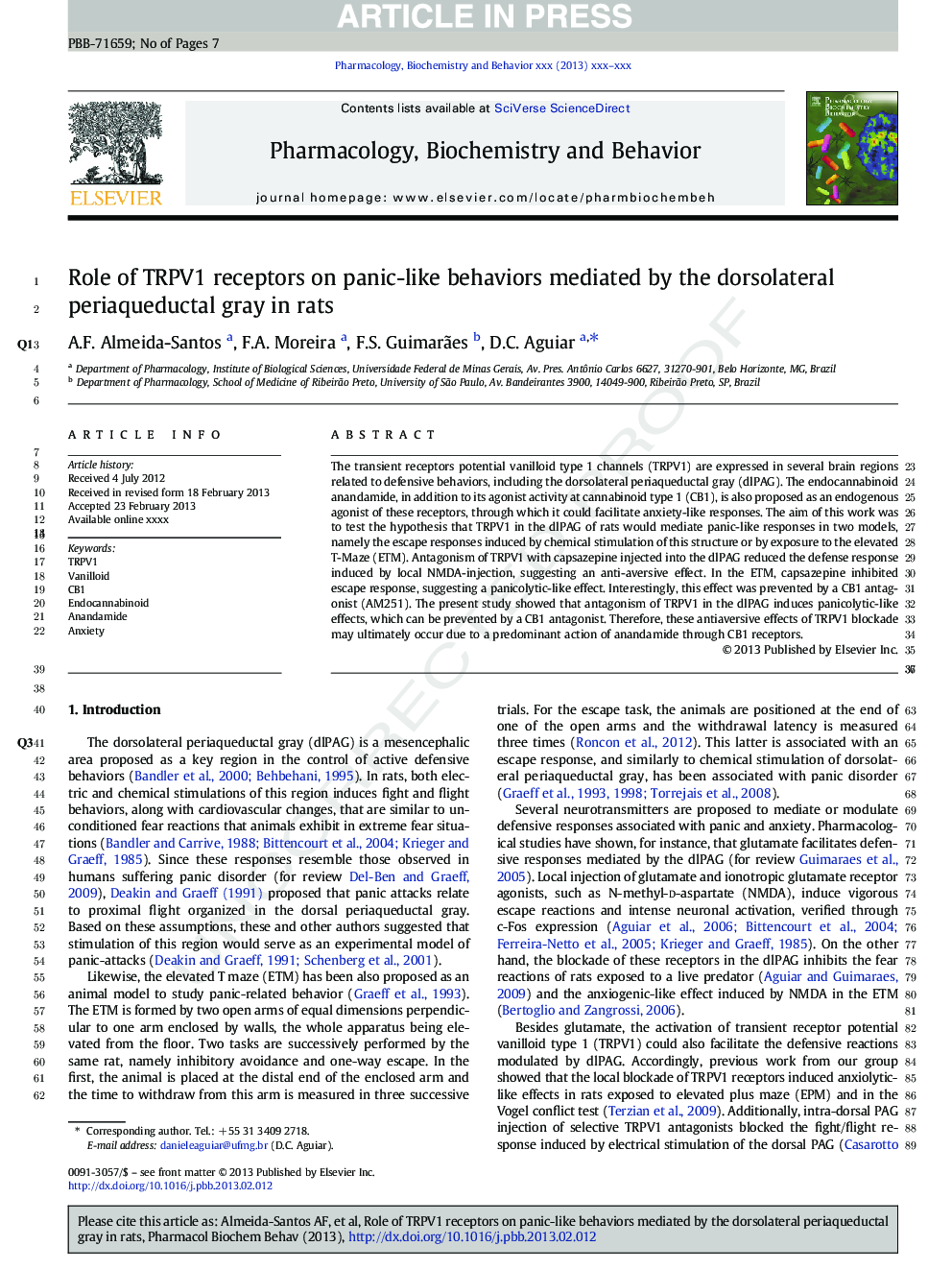| Article ID | Journal | Published Year | Pages | File Type |
|---|---|---|---|---|
| 8352142 | Pharmacology Biochemistry and Behavior | 2013 | 7 Pages |
Abstract
The transient receptors potential vanilloid type 1 channels (TRPV1) are expressed in several brain regions related to defensive behaviors, including the dorsolateral periaqueductal gray (dlPAG). The endocannabinoid anandamide, in addition to its agonist activity at cannabinoid type 1 (CB1), is also proposed as an endogenous agonist of these receptors, through which it could facilitate anxiety-like responses. The aim of this work was to test the hypothesis that TRPV1 in the dlPAG of rats would mediate panic-like responses in two models, namely the escape responses induced by chemical stimulation of this structure or by exposure to the elevated T-Maze (ETM). Antagonism of TRPV1 with capsazepine injected into the dlPAG reduced the defense response induced by local NMDA-injection, suggesting an anti-aversive effect. In the ETM, capsazepine inhibited escape response, suggesting a panicolytic-like effect. Interestingly, this effect was prevented by a CB1 antagonist (AM251). The present study showed that antagonism of TRPV1 in the dlPAG induces panicolytic-like effects, which can be prevented by a CB1 antagonist. Therefore, these antiaversive effects of TRPV1 blockade may ultimately occur due to a predominant action of anandamide through CB1 receptors.
Related Topics
Life Sciences
Biochemistry, Genetics and Molecular Biology
Biochemistry
Authors
A.F. Almeida-Santos, F.A. Moreira, F.S. Guimarães, D.C. Aguiar,
